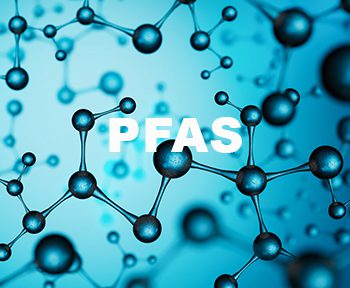U.S. EPA Pushing Ahead to Designate PFOA and PFOS as Superfund Hazardous Substances
August 31, 2022
Environmental Law
Late last week, the U.S. Environmental Protection Agency (U.S. EPA) moved forward to list perfluorooctanoic acid (PFOA) and perfluorooctane sulfonic acid (PFOS) (including their salts and structural isomers) as “hazardous substances” under the Comprehensive Environmental Response, Compensation, and Liability Act (CERCLA) (otherwise known as “Superfund”). EPA released a pre-publication version of a proposed rulemaking that officially begins U.S. EPA’s efforts to regulate and address per- and poly-fluoroalkyl substances (PFAS) contamination. The eventual designation of PFOA and PFOS as hazardous substances will create significant risks and potential liability for both private and public entities that may have contributed to PFOA and/or PFOS contamination in a variety of environmental media such as groundwater and soil.
Nicknamed “forever chemicals,” PFOA and PFOS belong to the broad group of manmade chemicals known as PFAS, which have been used in a wide range of consumer products and industrial processes due to their qualities to be waterproof, stain-resistant, and nonstick. As a result, PFAS are ubiquitous and have been released into the environment and drinking water supplies through their myriad applications. Importantly, these forever chemicals are reported to have a variety of adverse health effects.
Assuming U.S. EPA adopts the proposed rulemaking, the rule will require facilities to immediately report “releases” of PFOA and PFOS that meet or exceed the reportable quantity provided for those substances (one pound or more of PFOA or PFOS within a 24-hour period). Such a release may not necessarily lead to a clean-up action or the listing of a release site under the National Priorities List (NPL), but U.S. EPA believes such actions will lead to better waste management and treatment practices, as well as the promotion of privately financed cleanups.
U.S. EPA’s designations also will have a variety of legal implications for both private and public entities including municipalities involved in wastewater treatment. Indeed, U.S. EPA’s proposal notes that environmental sources of PFOA and PFOS “can include industrial, and inadvertent municipal and agricultural discharges of PFOA and PFOS directly.” Other legal implications include: (1) the potential re-opening of closed Superfund sites or updating current remedial actions under existing Superfund sites to address PFOA and/or PFOS contamination; (2) the designation of new Superfund sites; and/or (3) new potentially responsible parties (PRPs) could be liable to help pay for costs to cleanup PFOA/PFOS contamination associated with such sites.
Under the above scenarios, U.S. EPA could initiate enforcement actions to recover cleanup costs from PRPs. In addition, private parties including cities and counties, would be able to use a CERCLA listing to pursue cost recovery actions in federal court for investigation and remediation costs. These legal actions could be pursued against PRPs such as property owners and companies that are responsible for PFOA and PFOS contamination in groundwater and soil.
According to U.S. EPA, the agency’s “Notice of Proposed Rulemaking” (NPRM) will be published in the Federal Register in the next several weeks. Once the NPRM is published in the Federal Register, the public comment period will be sixty (60) days. Once the public comment period ends, U.S. EPA will likely move quickly to finalize the designations.
For questions about U.S. EPA’s rulemaking and efforts to regulate PFAS, please contact us.

